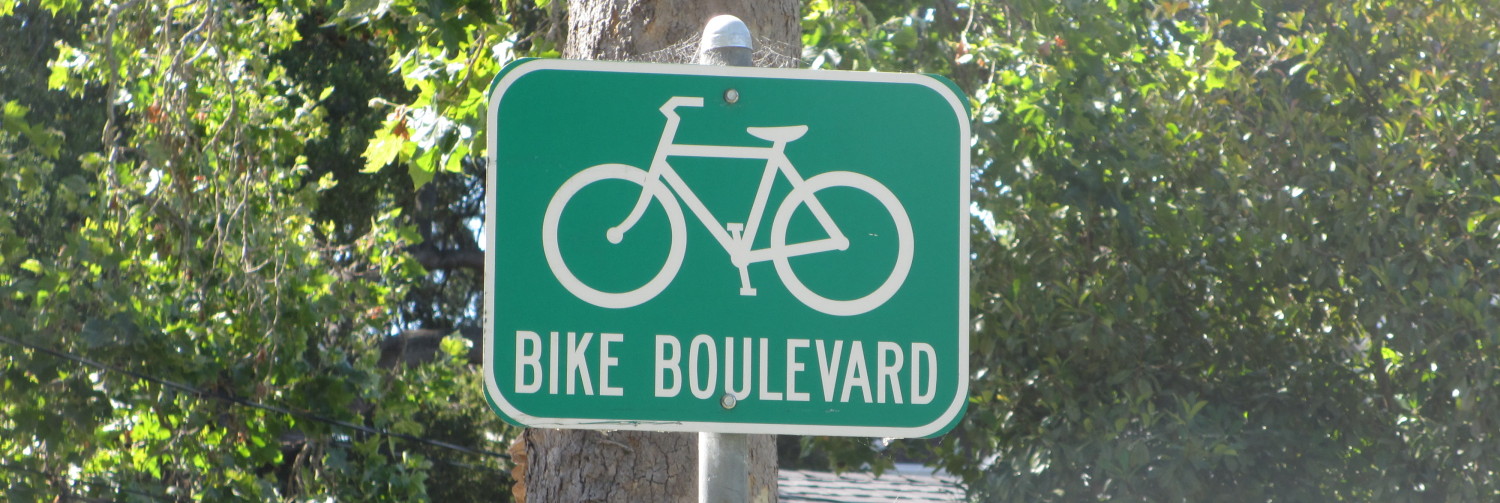Once the underground utilities are in, visible structures start to appear on the surface. The City necessarily puts a high value on the unseen stuff; as members of the public we relate more to what’s visible. And members of Rescue Bronson wanted a quality surface landscaping.
If the City merely restores what used to be there, we end up, after two years of construction mess, with an expensive landscape that facilitates front yard parking, dinky walkways to what were originally-built as celebrating building doorways, foot traffic that wears out the front foot (or more) or soft landscaping, etc.
A major step forward in urban landscaping, in my opinion, is the addition of a second concrete curb, this time behind the pedestrian walk. This keeps snowplows off the landscaping, discourages foot traffic on the growing media, and usually thwarts front yard parking. It gives trees and shrubs and even grass as fighting chance in a heavy mechanical environment.
Above: the old front yard has been dug up for new sewer and water connections. The space leftover after the road and other stuff is put in is pretty small. It needs all the help it can get to support landscaping.
Above: the curb protects the front edge. It is a battle to get the city to extend the curb back to the house foundation, but it is a worthwhile feature. It deters front yard parking. It defines the planting zone. The generous wide new front steps are proportionate to the size of the porch.
Above: curbed plant zone is separate from the driveway and front walkway. It will still be a struggle for trees and plants to survive if planted in road-building gravel which is designed to compact into an unshifting mass, but there are likely some hidden underground features which will be the subject of a subsequent story. The eight or so inches of topsoil will be enough to support most front yard plantings of shrubs or grass.
above: a number of buildings along Bronson had front yards paved in bricks or asphalt for not-necessarily-legal parking on the front lawn / city boulevard space. If the city restored the brick, car parking would resume, and the streetscape continues to be degraded. We asked for the planter shown above to extend right back to the front wall of the building, and all buildings along the street. The City originally demurred, saying they would require legal permission from every owner before they designed that. We encouraged them to go the “cablevision route”, ie design the curb all the way back, and see who objects, as it is hard for property owners to envision what the whole street could look like when pre-construction it is such an abused space. Obviously, this owner wanted the “low maintenance” bricks restored. But it looks like there will be three trees in these two planters, and the brick space may be too narrow to fit in a car.
 Above: notice how the planter runs the full width of the building, so it is in scale. When there will be trees and shrubs, this building will look better, attract tenants easier, and offer a green buffer from the traffic, particularly for the first a second floor apartments which will look into leafy trees. A similar building isn’t as well done:
Above: notice how the planter runs the full width of the building, so it is in scale. When there will be trees and shrubs, this building will look better, attract tenants easier, and offer a green buffer from the traffic, particularly for the first a second floor apartments which will look into leafy trees. A similar building isn’t as well done:
Above: this apartment building a bit further down the street has a much more minimal planter. What exactly is the amenity value of the gap between the planter and the front walkway? And worse yet, what is the gap to the left of the planter? It’s too small to park a car… I think this building is falling short of the benefits it could have had.
Above: Rescue Bronson specifically identified the Guytel building has having an excessively wide curb dip. Why does a small business with six or eight parking spaces need a 35′ wide driveway?The planter on each side is way shorter than the parking space beyond it.
Above: the muffler shop beside Guytel. Another too-wide entrance. That planter could have been at least the depth of the parking space, as the asphalt area is now just left-over paved space.
The curbed planters line up from house to house, adding some regularity to the streetscape, helping to define the walkway. A row of bricks against the roadside curb will help define the junk zone where the city drops in hundreds of sign posts, locates the street lighting, and hopefully contains the dead tree trunks supporting overhead wiring.












I know some tree species have a hard time living close to roads with heavy traffic pollution. When designing these places for trees, did the city tree people get involved? I like the back curb idea when it defines a space that will be loved and tended by the property owners, but I worry if the owner has a brown thumb what these smaller locations will end up like. A few sickly bushes and dandelions perhaps?
Sickly bushes and dandelions pretty much sums up what was there before the reconstruction project. Yup, some properties will not maintain the landscaping, and it will deterioriate, just as it might with no city improvements. On the positive side, some landlords will maintain the new shrubs and reap the benefits.